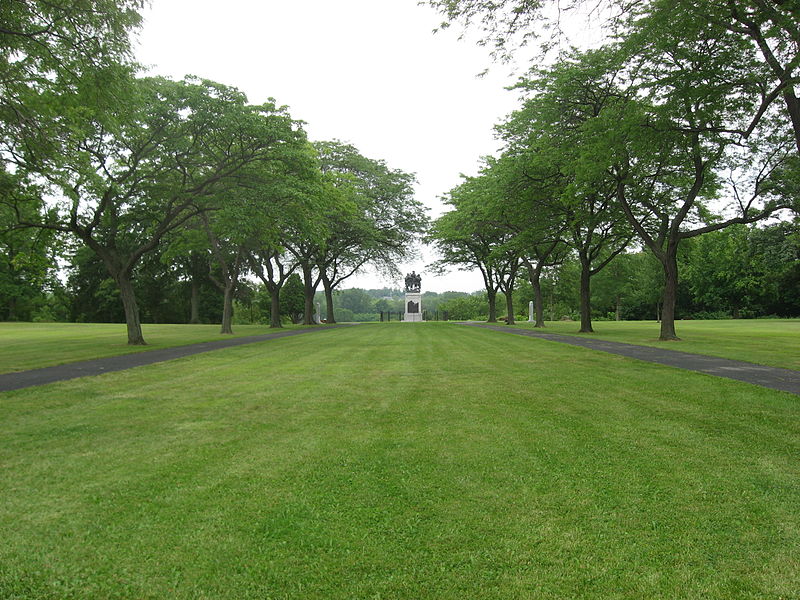By American Battlefield Trust
When this nation’s defining conflicts were fought and decided, North America remained relatively undeveloped and many battles were fought on farmland, or in wilderness. Frequently, part of our work in preserving these hallowed grounds is to restore them to a historically accurate landscape so visitors can experience them as they were.
But preserving and restoring battlefields safeguards more than history. In addition to protecting the battlefield’s historical integrity, we enable the protection of water and air quality, forests, flora and fauna and other natural resources.
Here are five specific ways saving battlefields is good for the planet.
Conservation easements permanently protect the environment.
Conservation Easements are a key tool that the Trust and its partners use to permanently protect battlefields. These legally binding agreements require private land to be maintained in an environmentally sustainable way, protecting water quality, open space, wildlife habitats and more. Each time the Trust places a conservation easement on a property, it ensures that the land will remain an open space and historic battlefield landscape forever.
Battlefield preservation protects important watersheds.
Healthy watersheds, areas of land that drain into a body of water, are essential for drinking water for people and wildlife. The Chesapeake Bay Watershed, one of the nation’s most important watersheds, is home to 113 major Civil War battlefields, nine major War of 1812 battlefields and four major Revolutionary War battlefields. To date, the Trust has preserved 26,553 acres in the Chesapeake Bay Watershed, including 1,151,140 linear feet of rivers and streams.
Preserving battlefields protects natural habitats for plants and wildlife.
As much as possible, when we preserve or restore historically significant land, we aim to support the ecosystems that thrive there, including plants and animals. For example, in a recent restoration project at The Breakthrough, part of the Petersburg National Battlefield, the Trust planted native grasses, removed invasive species and established vegetative buffers around wetlands, creating a nurturing habitat for wildlife, including two critically endangered species of the region: the Bachman’s Sparrow and the Spotted Turtle. Establishing natural meadows provides a wonderful habitat for ground-nesting wildlife.
Trees and vegetation reduce greenhouse gases, sequester carbon and improve air quality.
Preserving battlefields means preserving – or restoring – native plant life. Native flora on preserved battlefields requires little maintenance to do all the great things that plants do for the environment. With projects like the Trust’s restoration of the historic East Woods at Antietam, where we were able to plant 1,689 trees thanks to a grant from the Maryland State Highway Administration – or simply by saving outdoor spaces and the plants and trees that grow on them – our work helps support cleaner air and reduce greenhouse gases.
Battlefield preservation promotes sustainable farming practices.
Many battles took place on or near farmland, and in preserving these fields, the Trust plays a role in keeping it in agricultural use. By encouraging sustainable practices like crop rotation, we help reduce erosion and improve soil quality.
Nature is wise. That’s why every acre we maintain or restore to its natural state contributes positively to the protection of natural resources and the environment. Furthermore, every acre preserved is an acre that can’t be used for activities that significantly add to air and water pollution or produce stormwater runoff. It can be difficult to fully grasp how much we benefit from healthy ecosystems – and easy to take these benefits for granted. Yet every aspect of our lives – including public health, climate and the economy – is affected by these natural systems.
There’s a reason why preserved battlefields increase property values. Simply living near thriving outdoor spaces offers environmental and economic benefits for individuals and communities. For those who visit these hallowed grounds, battlefields provide an outdoor space to learn about American history, participate in recreational activities, or simply relax and enjoy nature. Ultimately, battlefield preservation nurtures our appreciation for history and the natural world.
“The protection of natural and agricultural lands is linked to a sustainable economy and healthy communities. In addition, conservation lands and the ecosystems services they provide are just as important to our economy and well-being as are our roads, residences, and businesses. Natural and agricultural lands are vital for our water quality and supply, our wildlife, and our tourism. These lands support us; they provide for and clean our water, provide flood control, storm protection, food, recreation, clean air, etc. Land conservation isn’t an amenity value; it is vital [to] our future.”
“When we see land as a community to which we belong, we may begin to use it with love and respect.”
Aldo Leopold, Sand County Almanac
Editor’s note: this article originally appeared at https://www.battlefields.org/preserve/battlefields-mean-ecosystems



Leave a Reply